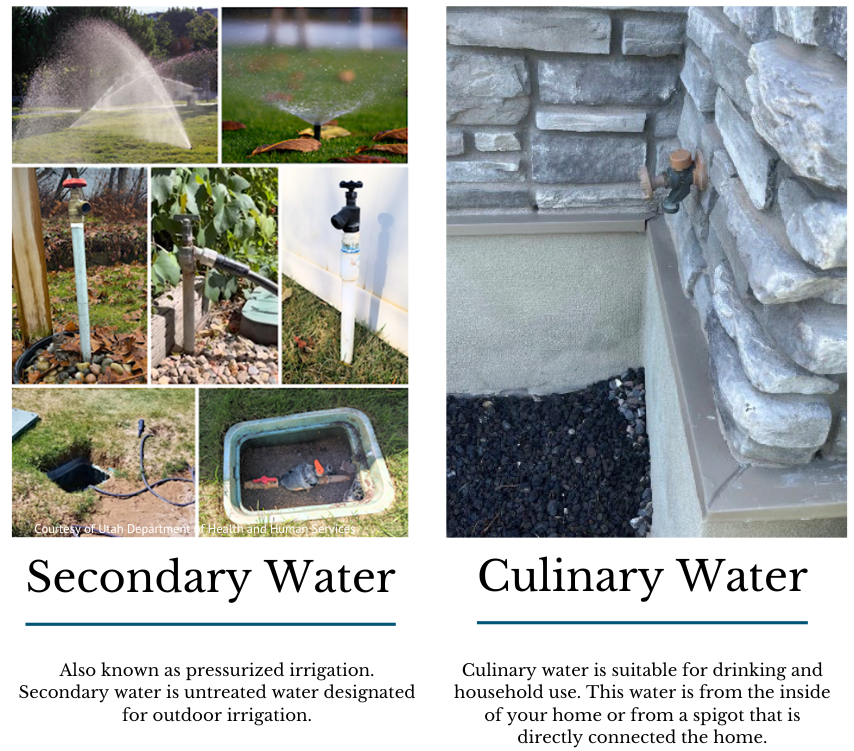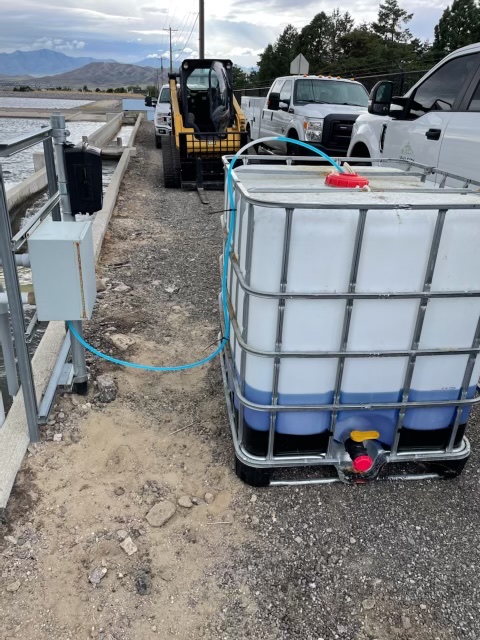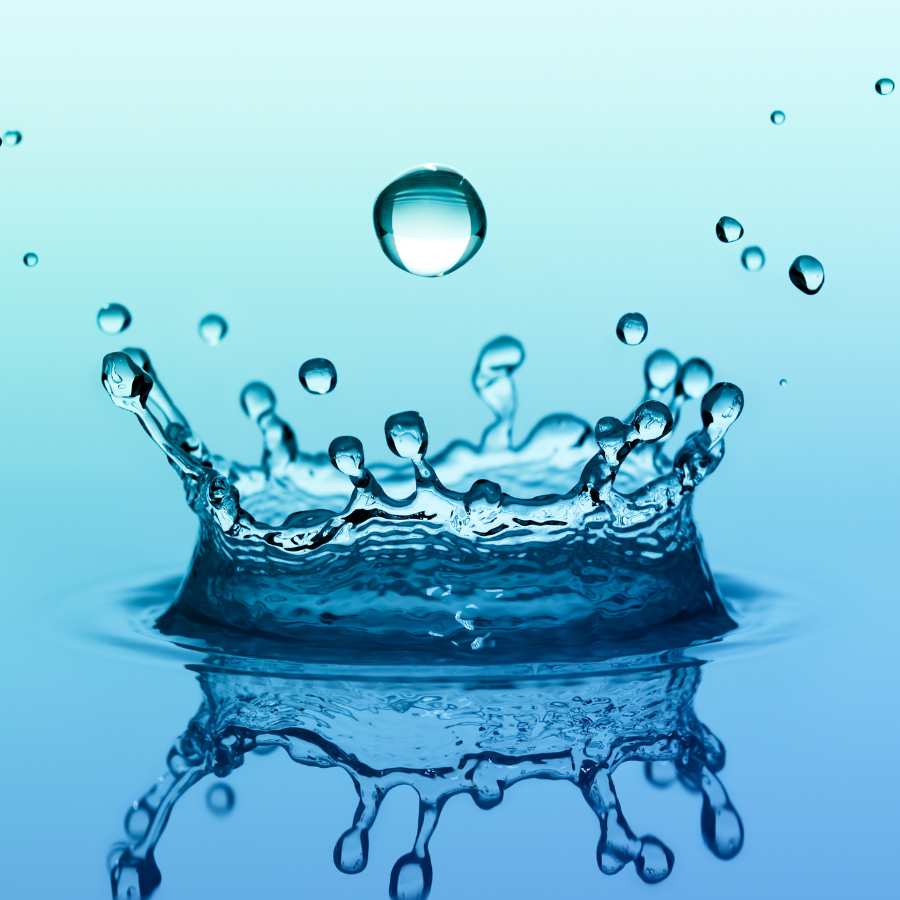As spring emerges in Lehi City, it’s time to prepare for another irrigation season. As we gear up for the warmer months ahead, it’s essential to understand the details of secondary water usage, its conservation, and, most importantly, its safety.
Understanding the Difference: Secondary Water vs. Culinary Water
First and foremost, let’s distinguish between secondary water (also known as pressurized irrigation) and culinary water. While culinary water is suitable for drinking and household use, secondary water is designated for outdoor irrigation. It’s essential to keep this distinction in mind to ensure the efficient and safe use of our water resources. Unlike the City’s culinary water system, pressurized irrigation water is not treated, making it vulnerable to contamination and harmful bacteria. 
Conservation is Key
As we approach April 15, the official start of irrigation season, it’s crucial to be mindful of our water usage. While residents can turn on their PI connections on this date, we urge everyone to delay watering their lawns until May 1st. By waiting a little longer to use secondary water, we can make a significant impact on water conservation, especially during the hotter months of summer.
To assist in this effort, we encourage residents to follow the weekly lawn watering guide available at conservewater.utah.gov/weekly-lawn-watering-guide/. This guide provides valuable insights into optimizing irrigation schedules for maximum water conservation.
Seasonal Maintenance for Optimal Performance
 Behind the scenes, the Lehi City Water Department works tirelessly to ensure the reliability and safety of our secondary water supply. Seasonal cleaning of basins and reservoirs is a vital aspect of this maintenance process. Each fall, our dedicated staff cleans sedimentation basins and reservoirs to remove any accumulated debris or sediment. This routine maintenance includes cleaning at various locations such as the:
Behind the scenes, the Lehi City Water Department works tirelessly to ensure the reliability and safety of our secondary water supply. Seasonal cleaning of basins and reservoirs is a vital aspect of this maintenance process. Each fall, our dedicated staff cleans sedimentation basins and reservoirs to remove any accumulated debris or sediment. This routine maintenance includes cleaning at various locations such as the:
- Sandpit Sedimentation Basin
- West Side Sedimentation Basin
- Pilgrim Reservoir
- Oak Hollow Reservoir
- Seasons Reservoir
During the 2023 cleaning of the Sandpit & West Side Sedimentation Basins, a T-Chlor disinfectant was applied with the city’s water truck.
Join the Effort: Keep Leaves and Debris Out of Lehi City’s Storm Drains!
In Lehi City, we’re reaching out for your assistance in a crucial matter: keeping leaves and debris out of our storm drains. Why does it matter? When leaves accumulate and clog these drains, it can lead to road damage, driving hazards, and property flooding. While our dedicated crews are working tirelessly, we need YOUR help to make a real difference.
Here’s how you can contribute: Ensure that leaves and debris from your yard stay out of the streets and away from storm drains. If you notice clogged drains, lend a hand and clear the gutters. Remember, when leaves wash into storm drains, they end up in our rivers and lakes, fueling unwanted algae growth. This can restrict recreation, pose health risks, and harm fish populations. On a brighter note, those leaves can still benefit your yard! Consider mulching them, spreading them in your garden, or bagging them to prevent clogs. Let’s work together to keep our streets clear, protect our waterways, and maintain a vibrant, healthy community in Lehi City. Your efforts truly make a difference!
Safety Reminders for Pressurized Irrigation
While secondary water is essential for maintaining vibrant lawns and landscapes, it’s crucial to remember that it’s not suitable for drinking or recreational use. Drinking or playing in irrigation water can pose health risks, as it may contain harmful bacteria. Therefore, it should not be used for activities like filling bounce houses, pools, slip-slides, water tables, and more.
As we embark on another irrigation season, let’s prioritize water conservation and safety. By working together and being mindful of our water usage, we can ensure a sustainable future for Lehi City.
For more information on secondary water safety, visit SecondaryWaterSafety.utah.gov.



